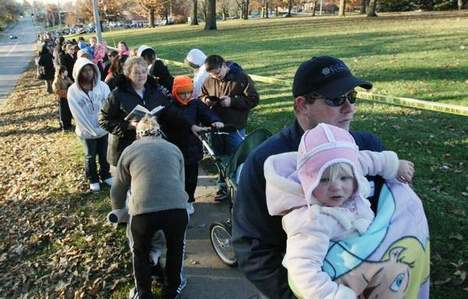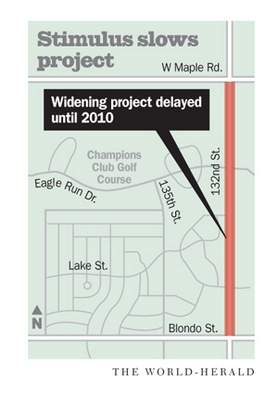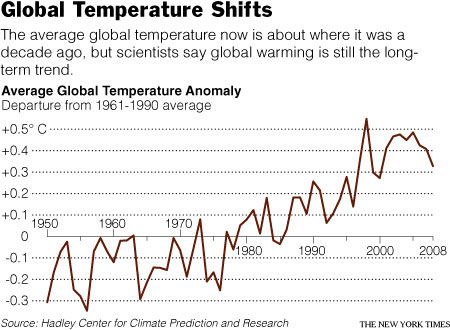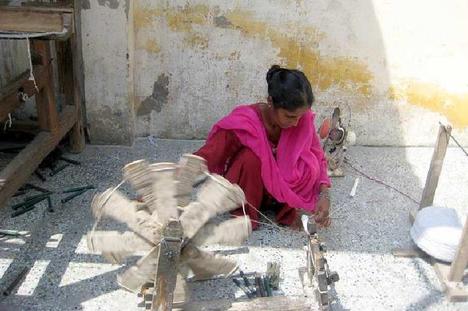 “Michael Kellerman and daughter Jovi, 1, wait in line near 69th and Underwood for a flu shot Thursday morning.” Source of caption and photo: online version of the Omaha World-Herald article quoted and cited below.
“Michael Kellerman and daughter Jovi, 1, wait in line near 69th and Underwood for a flu shot Thursday morning.” Source of caption and photo: online version of the Omaha World-Herald article quoted and cited below.
Thousands turned out this morning for Douglas County’s first public clinic for H1N1 flu vaccinations.
The line ran out of the First United Methodist Church to the east, then down 69th Street before hooking west along Cass Street toward 72nd Street.
Police estimated that 4,000 people had gathered by 9:20 a.m.
Phil Rooney of the Douglas County Health Department said the turnout was no surprise.
“There hasn’t been a clinic this size done in the county or in the surrounding counties recently, so we were prepared for a very large crowd, and that’s what we’ve got,” he said.
He said 252 people were vaccinated in the clinic’s first hour. “The pace the first hour was slower than we wanted, so we’re trying to pick that up,” he added.
For the full story, see:
John Keenan and Rick Ruggles. “Long line for flu shots.” Omaha World-Herald online edition (Thurs., Nov. 5, 2009).
(Note: as far as I can tell, having checked several online e-editions for Nov. 5 and Nov. 6, this version of the article was never published in any of the print editions of the paper.)
(Note: at some point the title of the online version of this article was changed to “Flu shot seekers turned away.”)




